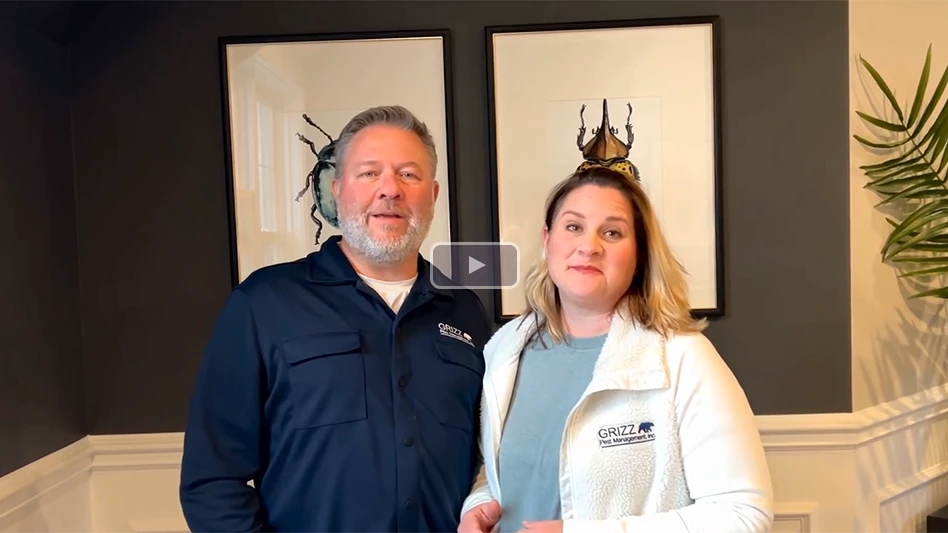The question, "What is "Green?" has been posed many times within the pest management industry. There are many answers to this question resulting in various interpretations.
Certainly the answer is not any of the following: a green color or pigment; resembling the color of growing grass or the color between blue and yellow in the color spectrum; similar to the color of "green paint"; an area of closely cropped grass surrounding a hole on a golf course; or, even, looking pale and unhealthy. Or is it?
Last year, NPMA held a GreenPro meeting in San Antonio, Texas, in conjunction with the Texas Pest Management Association. The GreenPro-Certified Eco-Effective Certification Program, previously known as QualityPro Green, endeavors to practice responsible pest management, stimulate consumer demand for green services, and increase environmental awareness and accountability.
As part of the GreenPro meeting experience, many types of treatment techniques were presented to stimulate both awareness and discussion. The numerous presentations on green techniques provided an in-depth review of this topic. My presentation was titled "The ABC’s of Green Techniques," and I reviewed the following list of tips and treatment techniques based on my experience in the pest control industry.
A
- A cotton swab dipped in alcohol can be used to kill mealybugs. Alcohol dissolves the wax around the insects and egg masses, killing them.
- Allelopathy is a phenomenon in which some plants inhibit the growth of competing vegetation (allelochemicals).
- Almond oil containing benzaldehyde has been shown to have carpenter bee-repellent qualities (Orlove, M.J.).
- Sudsy or soapy ammonia can be used against bed bug infestations.
- Anhydrous calcium carbonate is available in small packages to absorb free moisture from wood and other surfaces in small areas of the home.
B
- Bacillus thuringiensis and subspecies that produce a spore and protein called endotoxin (ingested stomach poison) can be used for control of mosquitoes and other insect pests.
- Three commercially available predators — breen lacewings, convergent lady beetles, and gall midges — can biologically control aphids on indoor plants.
C
- Camphor can be used against clothes moths after being broken into small pieces about ½ inch square and scattered throughout a garment or tapestry container.
- Cockroach-infested items can be sealed in 6-mil. plastic bags and the air sucked out of each bag by a vacuum then CO2 is released to fill the bag and taped.
- Citrus peel extracts are d-limonene (a citrus oil) and linalool (an alcohol), which are either terpenes or hydrocarbons with insecticidal and repellent properties.
F
- Flexinet electric fencing keeps out all animals and their predators. This visible fence comes in 165-foot lengths with all the posts built within. Customized fencing is available for horses, goats, sheep, hogs, and poultry. The 20-inch Flexinet keeps rabbits and rodents out.
- Flaming eliminates herbicide use by scorching weeds (up to 2,000°F). This safe and easy-to-operate torch kit lets the operator use the torch with one hand and moves the dolly simultaneously.
G
- Garbage or waste should be handled correctly along sanitation lines. Containers need to have tight-fitting lids, routinely cleaned, and emptied on a schedule.
- Garlic oil, Allium sativum, a member of the lily family, has been used for ailments from toothache to HBP. Modern studies confirm antibacterial, antifungal, amebicidal, and insecticidal properties. Contains allylcysteinesulfate as di and trisulfides as actives.
H
- Heating a structure’s interior between 135ºF and 150ºF eliminates insects, including those in tiny crevices and heat sinks.
- Dehumidifiers remove moisture from warm, humid air, working like an air conditioner, moving warm air past two coils. Moisture from the air condenses on one set of coils. The water drips into a reservoir or through a hose to a drain. The other coil warms the air, which is blown into the house or room. A dehumidifier does not function well under 65ºF.
M
- Mosquito fish, Gambusia affinis, are used for mosquito control in man-made bodies of water. A 1-foot piece of clay pipe can be used to protect them.
N
- A natural enemy to regulate pest populations is accomplished through discovery and introduction of new natural enemies, by conservation of existing natural enemy populations, and by periodic augmentative releases of mass-reared natural enemies. These three activities are basic tenets of successful applied biological control.
- Bird netting is a very effective and economical way to keep birds out of key areas in and around buildings. Whole sections of a building can be "walled-off" or particular features protected.
- Cold treatments of liquid nitrogen can eradicate pests that live in a narrow temperature range. Liquid nitrogen can be pumped into walls, which freezes the pests, killing them, then warms and evaporates. This method of pest control has been effective in controlling carpenter ants and drywood and powderpost termites.
P
- Pheromones are a substance produced by an organism that elicits a response in another of the same species. Allomone favors emitter over receiver. Kairomone favors receiver over emitter. Synomone favors emitter and receiver.
S
- Solarization is a non-chemical technique that captures the radiant heat and energy from the sun and causes physical, chemical, and biological changes in the soil. These changes lead to control, or suppression, of soil-borne plant pathogens such as fungi, bacteria, nematodes, and pests along with weed seeds and seedlings.
- Storage containers can be used to keep out pests.
U
- Ultraviolet light traps are effective sub-controls and environmental monitoring devices. The size or wattage (w/m2) and phosphor emission of the trap must slightly exceed the line-of-site space provided.
V
- Vitamin B1 or thiamine taken orally has been used as a flea repellent. F. Perlman reports the results of a study in which 24 of 33 patients who took 50 mlligrams of vitamin B1 3x/d counted fewer flea bites. Pets can be given B-complex vitamins at a dose of ¼ to ½ a 10 milligram vitamin pill twice daily (only when flea populations are heavy or if the animal shows FAD). Be sure to consult your physician or veterinarian.
W
- Aphids can be washed off plants and some will be killed and others end up food for other predators. Repeat every 3 to 4 days.
FINAL THOUGHTS. This ABC’s of Green Techniques list will be evolving. It will continue to be expanded within our challenging business environment. The question, "What is Green?" will certainly continue to be posed. Pertaining to the pest management industry and its many professionals, the GreenPro Certification Program will continue to adapt to a strong consumer demand for green pest management services and the quest of Green.
The author is a physician, board certified entomologist (BCE), and pest control industry consultant based in Des Moines, Iowa. He can be contacted at dmitchell@giemedia.com.
References cited:
Eder, Howard L., Fleabites, prevention and treatment with thiamine chloride, Arch. Pediatrics, 62:300, July 1945.
Gerling, unpublished observations
Orlove, unpublished observations
Perlman, F., Allergenic extracts; comparison of their quality and reliability; description of technique for preparation of stabile allergens and proposal for biologic assay, J. Allergy, 30:24, February 1959.
Perlman, F., Insect allergens: their interrelationship and differences; a comparison of skin reactivity and a proposal for routine skin testing with insect allergens, J. Allergy, 32:93, March-April 1961.

Explore the June 2010 Issue
Check out more from this issue and find your next story to read.
Latest from Pest Control Technology
- Webinar: ActiveGuard Will Positively Impact Your Bottom Line
- MGK Announces EPA Registration of Botanical Active Ingredient Veratrine
- Termite Control Sales Strategies
- NPMA Announces ELP Class of 2025
- Termite Control Tools and Equipment for PMPs
- Choe Reviews Drywood Termite Geographical Hotspots, Latest Research Findings
- Mosquito Squad Announces Rebranding to Mosquito Squad Plus
- Pest Control Equipment: If it’s Critical, Back it Up!





